1706
1706 (MDCCVI) was a common year starting on Friday of the Gregorian calendar and a common year starting on Tuesday of the Julian calendar, the 1706th year of the Common Era (CE) and Anno Domini (AD) designations, the 706th year of the 2nd millennium, the 6th year of the 18th century, and the 7th year of the 1700s decade. As of the start of 1706, the Gregorian calendar was 11 days ahead of the Julian calendar, which remained in localized use until 1923.
| Millennium: | 2nd millennium |
|---|---|
| Centuries: | |
| Decades: | |
| Years: |
| 1706 by topic |
|---|
| Arts and science |
|
| Countries |
|
| Lists of leaders |
|
| Birth and death categories |
|
| Establishments and disestablishments categories |
|
| Works category |
|
| Gregorian calendar | 1706 MDCCVI |
| Ab urbe condita | 2459 |
| Armenian calendar | 1155 ԹՎ ՌՃԾԵ |
| Assyrian calendar | 6456 |
| Balinese saka calendar | 1627–1628 |
| Bengali calendar | 1113 |
| Berber calendar | 2656 |
| English Regnal year | 4 Ann. 1 – 5 Ann. 1 |
| Buddhist calendar | 2250 |
| Burmese calendar | 1068 |
| Byzantine calendar | 7214–7215 |
| Chinese calendar | 乙酉年 (Wood Rooster) 4402 or 4342 — to — 丙戌年 (Fire Dog) 4403 or 4343 |
| Coptic calendar | 1422–1423 |
| Discordian calendar | 2872 |
| Ethiopian calendar | 1698–1699 |
| Hebrew calendar | 5466–5467 |
| Hindu calendars | |
| - Vikram Samvat | 1762–1763 |
| - Shaka Samvat | 1627–1628 |
| - Kali Yuga | 4806–4807 |
| Holocene calendar | 11706 |
| Igbo calendar | 706–707 |
| Iranian calendar | 1084–1085 |
| Islamic calendar | 1117–1118 |
| Japanese calendar | Hōei 3 (宝永3年) |
| Javanese calendar | 1629–1630 |
| Julian calendar | Gregorian minus 11 days |
| Korean calendar | 4039 |
| Minguo calendar | 206 before ROC 民前206年 |
| Nanakshahi calendar | 238 |
| Thai solar calendar | 2248–2249 |
| Tibetan calendar | 阴木鸡年 (female Wood-Rooster) 1832 or 1451 or 679 — to — 阳火狗年 (male Fire-Dog) 1833 or 1452 or 680 |
Wikimedia Commons has media related to 1706.
In the Swedish calendar it was a common year starting on Monday, one day ahead of the Julian and ten days behind the Gregorian calendar.
Events
January–March
- January 26 – War of Spanish Succession: The uprising by Bavarians against the occupation of the Electorate of Bavaria by Austrian troops ends after 75 days, and ends the plans of Maximilian, the Elector of Bavaria, to bring Bavaria under the rule of the House of Wittelsbach.
- January 26 – Great Northern War: The Battle of Grodno begins when a coalition of 34,000 Swedish and Polish troops besieges the then-Lithuanian city in the winter time and clashes with 41,000 Russian and Saxon troops. After almost three months of fighting that lasts to April 10, Sweden takes control of the city, which is now located in Belarus.
- February 6 – The city of Albuquerque, New Mexico, is incorporated by governor Don Francisco Cuervo y Valdes as La Villa de Alburquerque in the Spanish colonial province of Santa Fe de Nuevo México in New Spain. Governor Cuervo sends a report on April 23 to the Spanish Crown and to New Spain's Governor, Francisco Fernández de la Cueva, 10th Duke of Alburquerque announcing that the new villa, consisting of 35 families and having a population of 252 adults, has been named in honor of the Duke. [1]
- February 13 – Great Northern War: Outnumbered more than 4 to 1 in infantry troops, and more than 2 to 1 overall, Swedish troops under the command of General Carl Gustaf Rehnskiöld defeat a larger force of 20,000 Russian and Saxon infantry and cavalry at the Battle of Fraustadt.
- March 21 – Mary Channing, who was pregnant at the time that she was convicted of the murder of her husband, is burned at the stake at Dorset, in front of a crowd of 10,000 onlookers.
- March 27 – Concluding that Emperor Iyasus I of Ethiopia has abdicated by retiring to a monastery, a council of high officials appoint Tekle Haymanot I Emperor of Ethiopia.
- March 31 – The last Courts (parliament) of the Principality of Catalonia are finished; their dissolution is presided over by King Charles III of Spain.
April–June
- April 10 – The Battle of Grodno ends with a Swedish victory over Russian troops.
- April 27 – War of the Spanish Succession: After a siege of 14 days, a French and Spanish army retakes control of Barcelona, which had been captured by England's army in 1705.
- May 12 – A total eclipse of the Sun takes place and is visible in most of Europe, with a path crossing modern-day Spain, France, Germany, Poland and Russia
- May 23 – War of the Spanish Succession – Battle of Ramillies: English, Dutch, German, Swiss and Scottish troops led by John Churchill, 1st Duke of Marlborough, defeat Franco-Bavarian forces in the Low Countries.
- June 9 – King Frederik IV of Denmark sends the first two Protestant missionaries to India, dispatching Lutherans Heinrich Plütcshau and Bartholomeus Ziegenbalg to Denmark's colony in India, the Dansk Ostindien, based at Tharangambadi ("Tranquebar") in what is now the Tamil Nadu state.
- June 11 – In Tibet, Lha-bzang Khan, khan of the Khoshut, kills the regent and kidnaps the 6th Dalai Lama, Tsangyang Gyatso, and kills the Lama's regent.
- June 28 – War of the Spanish Succession: Troops dispatched from Portugal capture Madrid and proclaim the Habsburg dynasty's Archduke Charles of Austria to be the King Carlos III of Spain, after the Bourbon ruler, Philip V, has fled.
- June 29 – Flemish Jesuit missionary François Noël is welcomed in China by the Kangxi Emperor at the Forbidden City in Beijing, and discusses the Emperor's disdain over the disapproval of Jesuit accommodation of Confucian rites by the Roman Catholic Church.
July–September
- July 22 – The Treaty of Union between Scotland and England is agreed upon in London, for ratification by the national legislatures.[2]
- August 4 – War of the Spanish Succession: The Spanish Bourbon armies of King Philip V retake Madrid from the Portuguese and Habsburg Austria troops that had entered the city in June.
- August 18 – King Louis XIV of France makes his last visit to Paris, and gets an update on the construction of the veterans' hospital at the Dome des Invalides, which he had commissioned more than 35 years earlier.
- September 7 – War of the Spanish Succession – Battle of Turin: Forces of Austria and Savoy defeat the French near what is now the Italian city of Torino.
October–December
- October 13 –
- Augustus II, known as August der Starke (Augustus the Strong), Elector of Saxony, having ruled as King of Poland since 1706, signs the Treaty of Altranstädt (1706), renouncing all claims to the throne to settle his fight with Sweden during the Great Northern War
- Iyasu I, Emperor of Ethiopia since 1682, is assassinated on the island of Tana, on orders of his son, Tekle Haymanot I, who has ruled in Iyasu's place. After being crowned as the new Empeor, Tekle Haymanot is stabbed to death in 1708 on orders of Iyasu's brother, Tewoflos
- October – Twinings founder, Thomas Twining, opens the first known tea room at 216 Strand, London, still open as of 2022.[3][4][5]
- November 4 – The Parliament of Scotland votes, 116 to 83, to approve the merger of Scotland with England to form the United Kingdom. [6]
- November 6 – A British attempt to conquer the Canary Islands fails when a fleet of 12 Royal Navy warships, commanded by Admiral John Jennings is forced to retreat after being met by a heavy artillery attack while sailing into Santa Cruz Bay
- November 15 – Five months after having been deposed from his position as the Dalai Lama, Tsangyang Gyatso disappears while in exile in Qinghai and is presumed to have been murdered.
- November 28 – The royal wedding of Prussia takes place in Berlin between the 18-year-old Crown Prince Friedrich Wilhelm and his bride Sophia Dorothea of Hanover, the 19-year-old daughter of the future King George I of Great Britain.
- December 9 – João V becomes the new King of Portugal upon the death of his father, Dom Pedro II, and begins a reign of 43 years.
- December 14 – Spanish General Alexandre Maître, Marquis de Bay leads the successful capture of Alcántara from Portugal
- December 31 – François Martin, the first Governor General of French India (now part India's union territory of Puducherry, retires after seven years and is replaced by Pierre Dulivier.
Births
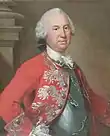
Lauritz de Thurah born 4 March

Andrew Oliver born 28 March
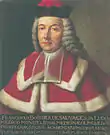
François Boissier de Sauvages de Lacroix born 12 May
.jpg.webp)
Benjamin Dass born 15 August
January–March
- January 1
- January 3 – Johann Caspar Füssli, Swiss portrait painter and writer (d. 1782)
- January 7 – Johann Heinrich Zedler, German publisher (d. 1751)
- January 17
- Benjamin Franklin, American inventor and Founding Father (d. 1790)
- George Michael Moser, Swiss artist and enameller (d. 1783)
- Richard Penn Sr., proprietary and titular governor of Pennsylvania and the counties of New Castle County (d. 1771)
- January 20 – Frederick Charles Augustus, Count of Lippe (d. 1781)
- January 26 – John Elder, pastor (d. 1792)
- January 28 – Shubal Stearns, colonial evangelist and preacher during the Great Awakening (d. 1771)
- February 2 – Claude-Godefroy Coquart, Jesuit priest who probably arrived in Quebec in 1739 (d. 1765)
- February 8 – Luis de Córdova y Córdova, Spanish admiral (d. 1796)
- February 11 – Nils Rosén von Rosenstein, Swedish physician (d. 1773)
- February 12 – Johann Joseph Christian, German Baroque sculptor and woodcarver (d. 1777)
- February 17 – Robert Hampden-Trevor, 1st Viscount Hampden, British diplomat at The Hague and then joint Postmaster General (d. 1783)
- February 19 – John Hornyold, English Catholic bishop (d. 1778)
- February 20 – Phineas Stevens, distinguished officer noted for his defense of the Fort at Number 4 during a siege in April 1747 (d. 1756)
- February 26 – Jan Antonín Vocásek, Czech Baroque painter (d. 1757)
- February 28 – Philippe-François Bart, French naval officer who was Governor of Saint-Domingue during the Seven Years' War (d. 1784)
- March 1 – Sébastien Bigot de Morogues, French soldier, a sailor and military naval tactician (d. 1781)
- March 4 – Lauritz de Thurah, Danish architect and architectural writer (d. 1759)
- March 6 – Sir George Pocock, British admiral (d. 1792)
- March 7 – Johann Leonhard Dober, one of the two first missionaries of the Moravian Brethren in the West Indies in 1732 (d. 1766)
- March 12 – Johan Pasch, Swedish painter (d. 1769)
- March 13 – Johann Christoph Heilbronner, German mathematical historian (d. 1745)
- March 14 – Siegmund Jakob Baumgarten, German Protestant theologian (d. 1757)
- March 23 – Anna Maria Barbara Abesch, Swiss reverse glass painter and the daughter of Johann Peter Abesch (d. 1773)
- March 26 – Mather Byles, American clergyman active in British North America (d. 1788)
- March 28 – Andrew Oliver, merchant and public official in the Province of Massachusetts Bay (d. 1774)
- March 30 – Tommaso Struzzieri, Roman Catholic prelate who served as Bishop of Todi (1775–1780) (d. 1780)
April–June
- April 2 – Johann Joseph Würth, Austrian silversmith of the late baroque period (d. 1767)
- April 6 – Louis de Cahusac, French playwright and librettist (d. 1759)
- April 18 – William Brattle, Attorney General of Province of Massachusetts Bay as well as a physician (d. 1776)
- April 24 – Giovanni Battista Martini, Italian musician (d. 1784)
- April 29 – Pierre-Antoine Gourgaud, French actor (d. 1774)
- April 30 – Philipp Jakob Straub, Austrian sculptor (d. 1774)
- May 12 – François Boissier de Sauvages de Lacroix, French physician and botanist who was a native of Alès (d. 1767)
- May 17 – Andreas Felix von Oefele, German historian and librarian (d. 1780)
- May 20 – Seth Pomeroy, American gunsmith and soldier from Northampton (d. 1777)
- May 22 – Samuel Troilius, Archbishop of Uppsala in the Church of Sweden (d. 1764)
- June 10 – John Dollond, English optician (d. 1761)
- June 15 – Johann Joachim Kändler, German sculptor and important modeller of the Meissen porcelain manufactury (d. 1775)
July–September
- July 3 – Robert Lee, 4th Earl of Lichfield, English politician and peer (d. 1776)
- July 8 – John Hart, militia officer during King George's War and the French and Indian War (d. 1777)
- July 16 – Charles Godefroy de La Tour d'Auvergne, French nobleman (d. 1771)
- July 21 – Pierre Lyonnet, artist and engraver who became a naturalist (d. 1789)
- August 1 – Franz Sebald Unterberger, South Tyrolean painter in the Baroque style (d. 1776)
- August 4 – Frederick Charles, Duke of Schleswig-Holstein-Sonderburg-Plön (d. 1761)
- August 11 – Princess Marie Auguste of Thurn and Taxis, Regent of Württemberg (d. 1756)
- August 15 – Benjamin Dass, Norwegian educator and scholar who served as Rector of Trondheim Cathedral School (d. 1775)
- August 16 – Bakht Singh of Marwar, Indian Raja of the Rathore Clan (d. 1752)
- August 21 – Pierre Nicolas d'Incarville, French Jesuit, amateur botanist and missionary to China (d. 1757)
- August 24 – Sir John Evelyn, 2nd Baronet, British courtier and Whig politician (d. 1767)
- August 28 – Jan Bouman, Dutch architect (d. 1776)
- September 3 – Alonso Verdugo, 3rd Count of Torrepalma, Spanish count (d. 1767)
- September 8 – Antoine de Favray, French painter noted for his portraits of personalities of the Ottoman Empire (d. 1798)
- September 9 – Jean-Baptiste Barsalou, Canadian fur trader (d. 1776)
- September 12 – Léon Ménard, French lawyer and historian (d. 1767)
- September 21 – Polyxena of Hesse-Rotenburg, second wife of Charles Emmanuel III of Sardinia (d. 1735)
- September 22 – Barbara Regina Dietzsch, Bavarian painter and engraver (d. 1783)
October–December
- October 6
- October 11 – Nicolaes Geelvinck, mayor of Amsterdam (d. 1764)
- October 18 – Baldassare Galuppi, Venetian composer (d. 1785)
- November 2 – Francis Godolphin, 2nd Baron Godolphin, British peer and politician (d. 1785)
- November 6
- November 7 – Carlo Cecere, Italian composer of operas (d. 1761)
- November 8 – Johann Ulrich von Cramer, German judge and philosopher (d. 1772)
- November 11 – Frederick William II, Prince of Nassau-Siegen, last Prince of Nassau-Siegen from the Calvinist line (d. 1734)
- November 18 – Johann Friedrich Alexander, Prince of Wied, German ruler (d. 1791)
- November 22 – Charles Spencer, 3rd Duke of Marlborough (d. 1758)
- November 25 – Henry Dodwell, British religious controversialist and lawyer (d. 1784)
- December 17 – Émilie du Châtelet, French mathematician and physicist (d. 1749)
- December 23 – John Cornwallis, British politician (d. 1768)
- December 24 – Anna Sophie Charlotte of Brandenburg-Schwedt, German noblewoman and member of the House of Hohenzollern (d. 1751)
- December 25 – Maria Anna of Schwarzenberg, Margravine consort of Baden-Baden and Princess of Schwarzenberg by birth (d. 1755)
- December 31 – Elisabetta Maria Satellico, Italian Roman Catholic professed religious from the Poor Clares who served as her convent's abbess (d. 1745)
- date unknown
Deaths
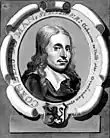
Cornelis de Man
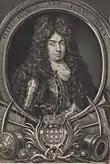
King Peter II of Portugal
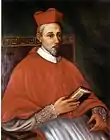
Marcantonio Barbarigo
- January 10 – Luisa Roldán, Spanish artist (b. 1652)
- January 17 – Sir John Lowther, 2nd Baronet, of Whitehaven, English politician (b. 1642)
- January 21 – Adrien Baillet, French scholar and critic (b. 1649)
- January 29 – Charles Sackville, 6th Earl of Dorset, English poet and courtier (b. 1638)
- February 5 – Pierre du Cambout de Coislin, French prelate (b. 1636)
- February 12 – Balthasar Kindermann, German poet (b. 1636)
- February 27 – John Evelyn, English writer, gardener and diarist (b. 1620)
- March 1 – Heino Heinrich Graf von Flemming, German field marshal and Governor of Berlin (b. 1632)
- March 3 – Johann Pachelbel, German composer (b. 1653)
- March 6 – García Felipe de Legazpi y Velasco Altamirano y Albornoz, Spanish Catholic prelate, Bishop of Tlaxcala (b. 1643)
- March 31 – Sultan Muhammad Akbar, Mughal prince (b. 1657)
- April 8 – Caspar Schamberger, German surgeon and merchant (b. 1623)
- April 10 – Arthur Chichester, 3rd Earl of Donegall, Irish soldier (b. 1666)
- April 12 – Thomas Howard, 3rd Earl of Berkshire, English earl and politician (b. 1619)
- April 25 – Thomas Hinckley, last colonial governor of Plymouth Colony (b. 1618)
- April 27 – Bernhard I, Duke of Saxe-Meiningen (1675–1706) (b. 1649)
- May 2 – Georg Joseph Kamel, Jesuit missionary and botanist (b. 1661)
- May 26 – Marcantonio Barbarigo, Italian Roman Catholic cardinal and venerable (b. 1640)
- July 2 – Beatriz Kimpa Vita, Congolese prophet (b. 1684)
- July 9 – Pierre Le Moyne d'Iberville, French founder of the colony of Louisiana (b. 1661)
- August 6 – Jean-Baptiste du Hamel, French cleric and natural philosopher (b. 1624)
- August 23 – Edward Nott, British Colonial Governor of Virginia (b. 1654)
- August 26 – Michael Willmann, German painter (b. 1630)
- September 1 – Cornelis de Man, Dutch painter (b. 1621)
- September 9 – Ferdinand de Marsin, Marshal of France (b. 1656)
- September 16 – Matthias Petersen, sea captain and whaler from the North Frisian island of Föhr (b. 1632)
- September 26 – Onofrio Gabrieli, Italian painter (b. 1619)
- October 13 – Iyasus I of Ethiopia (b. 1682)
- October 17 – William Jones, English lawyer, Deputy Governor of Connecticut (b. 1624)
- October 26 – Andreas Werckmeister, German organist, music theorist, and composer (b. 1645)
- November 9 – Peter Mews, English Royalist theologian and bishop (b. 1619)
- November 15 – Tsangyang Gyatso, 6th Dalai Lama (b. 1683)
- November 16 – Cornelis Evertsen the Youngest, Dutch admiral (b. 1642)
- November 20 – Sir Thomas Roberts, 4th Baronet, English politician (b. 1658)
- December 3 – Countess Emilie Juliane of Barby-Mühlingen, German noblewoman and hymn author (b. 1637)
- December 9 – King Peter II of Portugal (b. 1648)
- December 12 – Christian Louis, Count of Waldeck-Wildungen (1645–1692) and Count of Waldeck and Pyrmont (1692–1706) (b. 1635)
- December 28 – Pierre Bayle, French philosopher (b. 1647)
- Byerley Turk, thoroughbred stallion (b. c. 1684)
Date unknown
- Jeanne Dumée, French astronomer (b. 1660)
References
- Three hundred years later, Albuquerque is the largest city in U.S. state of New Mexico. Howard Bryan, Albuquerque Remembered (University of New Mexico Press, 2006) pp. 28-30
- Palmer, Alan; Veronica (1992). The Chronology of British History. London: Century Ltd. pp. 204–205. ISBN 0-7126-5616-2.
- "Icons, a portrait of England 1700-1750". Archived from the original on August 17, 2007. Retrieved August 24, 2007.
- Button, Henry G.; Lampert, Andrew P. (1976). The Guinness Book of the Business World. Enfield: Guinness Superlatives. ISBN 0-900424-32-X.
- "About Twinings - 216 Strand". Twinings. 2015. Retrieved February 13, 2015.
- "Acts of Union 1707", MEMIM Encyclopedia
This article is issued from Wikipedia. The text is licensed under Creative Commons - Attribution - Sharealike. Additional terms may apply for the media files.
